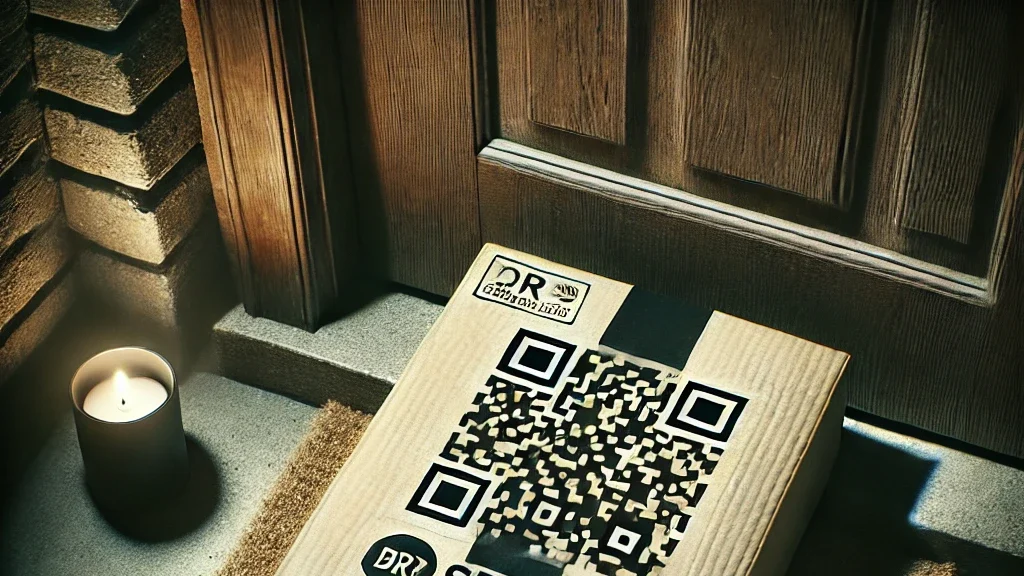
Don’t Fall For This Scam!
If you get an unrecognized package with a QR code inside, never scan it. Here’s what you should do instead...
One of the latest package scams, called brushing, involves unexpected packages showing up at your door. When you open the box, there’s often a QR code (tip: never scan an unfamiliar QR code) designed to trick you into sharing your sensitive information.
While the holiday season may be behind us, delivery-related scams are a year-round problem. Whether it’s “porch pirates” stealing packages off your doorstep or fake delivery texts tricking you into sharing credit card details, scams like these can cause financial losses and put your personal information at risk.
Victims of these scams can end up revealing sensitive details such as credit card numbers or Social Security information, potentially leading to identity theft or financial fraud.
What is ‘Brushing’?
“Brushing” is a scam where criminals send seemingly free gifts to unsuspecting recipients. Here’s how it works:
Imagine you open your door to find one or more packages you weren’t expecting, addressed to you. Inside, you’ll find random items—sometimes useful, other times strange.
According to the Better Business Bureau, brushing packages often contain inexpensive, lightweight items such as:
- Hand warmers
- Flashlights
- Bluetooth speakers
- Computer vacuum cleaners
These packages might not come with an explanation but could include a QR code. Scanning it often leads to a legitimate-looking website designed to steal personal information, such as:
- Your full name
- Credit card details
- Social Security number
In other cases, third-party sellers send these packages to generate fake reviews under your name. By doing this, they aim to boost product ratings and sales on platforms like Amazon or eBay.
Even though the items might seem like a pleasant surprise, the US Postal Service warns that receiving such packages often means your personal information has been compromised.
What To Do If an Unrecognized Package Shows Up
If a package you didn’t order arrives at your door, take these steps:
- Don’t Scan Any QR Codes: Avoid scanning any codes included in the package or agreeing to pay for the items.
- Notify Authorities: If the package contains liquids, seeds, or anything suspicious, contact local authorities or follow the Postal Service’s procedures for suspicious mail.
- Report It to the Retailer: If the package appears to come from reputable platforms like Amazon or eBay, file a fraud report with the company.
- Return to Sender: You can repackage the items and ship them back to the sender (if a return address is provided). Alternatively, mark the package as “RETURN TO SENDER” and hand it over to the Postal Service for free.
- Keep or Discard the Items: There’s no law against keeping unsolicited items if you choose. You can also discard them or give them away.
Additionally, update your account passwords, especially for online platforms where your information might have been compromised. Monitor your financial accounts and credit reports for unauthorized charges or new accounts opened in your name. Use AnnualCreditReport.com to check your credit reports for free with all three major credit bureaus.
Scams to Watch for Throughout the Year
While you might be more alert during the holidays, scams can occur anytime. Here are some to watch out for:
1. Gift Card Scams
Gift card scams involve criminals tampering with cards before they’re sold. They may:
- Place fake barcodes that redirect funds to themselves.
- Steal PIN codes to drain the card after activation.
How to protect yourself: Check gift cards for signs of tampering before purchase and always save your receipts. If you receive a gift card, use it promptly to avoid being scammed.
2. Charity Scams
Scammers posing as charities may solicit donations via social media or emails. They often provide vague details about their cause and pressure you to donate quickly.
How to protect yourself: Verify the legitimacy of charities before donating and don’t let anyone pressure you into giving money. Trusted resources like Charity Navigator can help you confirm a charity’s authenticity.
Tips to Avoid Becoming a Victim
The Federal Trade Commission (FTC) highlights several tactics scammers use to manipulate victims. Here’s how to stay safe:
- Know Common Payment Scams: Be cautious if someone asks for payments via cryptocurrency, gift cards, payment apps, or money transfers. These are often untraceable.
- Be Wary of Unsolicited Messages: Don’t respond to messages asking for information or payments out of the blue, even if they seem to come from reputable sources.
- Block Spam Calls and Texts: Block numbers that send unsolicited messages to reduce further communication.
- Pause Before Acting: If a situation feels suspicious, consult a trusted friend or family member before taking any action.
Report any scams or suspicious activity to the FTC at ReportFraud.ftc.gov.
By staying vigilant and following these tips, you can protect yourself from brushing scams and other forms of fraud. Remember, if something seems too good to be true—like free gifts—it probably is.
